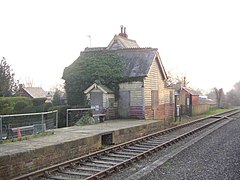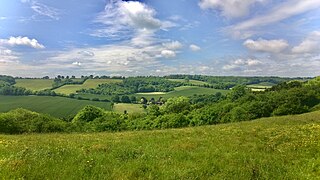
Buckinghamshire is a ceremonial county in South East England and one of the home counties. It is bordered by Northamptonshire to the north, Bedfordshire to the north-east, Hertfordshire to the east, Greater London to the south-east, Berkshire to the south, and Oxfordshire to the west. The largest settlement is the city of Milton Keynes, and the county town is Aylesbury.

Bierton is a village and civil parish in Buckinghamshire, England, about half a mile northeast of the town of Aylesbury. It is mainly a farming parish. Together with the hamlets of Broughton, Kingsbrook, Broughton Crossing and Burcott it historically formed the civil parish of Bierton with Broughton within Aylesbury Vale district and form part of the Aylesbury Urban Area, but in 2020 the parish was broken into three, with Bierton becoming its own parish.

Winslow is a market town and civil parish in north Buckinghamshire, England, within the Buckinghamshire Council unitary authority area. It has a population of just over 4,400. It is located approximately 6 miles (9.7 km) south-east of Buckingham, and 7 miles (11 km) south-west of Bletchley.

For the municipality in Quebec, see Adstock, Quebec

Drayton Parslow is a village and civil parish in Buckinghamshire, England, about 3.5 miles (5.6 km) south of Bletchley, within the Buckinghamshire Council unitary authority area. In the 2001 census the parish had a population of 596, increasing at the 2011 census to 614.
Great Horwood is a small village and is also a civil parish within the unitary authority area of Buckinghamshire, England with a population of about 1025 people. It is about five miles ESE of Buckingham, six miles WSW of Milton Keynes.
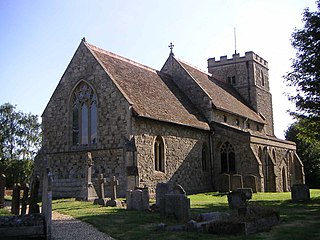
Mursley is a small village in and also a civil parish in Buckinghamshire, England. It is located about three miles east of Winslow and about seven miles south west of Central Milton Keynes.
North Marston is a village and also a civil parish in the Buckinghamshire district in the ceremonial county of Buckinghamshire, England. It is located about three miles south of Winslow, and four miles north of Waddesdon.

Stewkley is a village and civil parish in Buckinghamshire, England. The village is about 5 miles (8 km) east of Winslow and about 4 miles (6 km) west of Leighton Buzzard. The civil parish includes the hamlets of North End and Stewkley Dean.

Wingrave is a village in Buckinghamshire, England, about four miles north east of Aylesbury and three miles south west of Wing.

Swanbourne is a western coastal suburb of Perth, Western Australia, located within the City of Nedlands. It is an affluent, upper middle class residential area with older Federation style homes, many being renovated. The suburb was established in the late 19th century. New housing estates have been built recently through the redevelopment of areas such as the Swanbourne Senior High School, Swanbourne Primary School and Lakeway Drive-In Cinema sites.
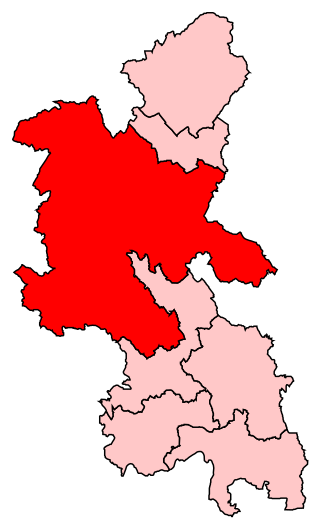
Buckingham is a constituency represented in the House of Commons of the UK Parliament since 2019 by Greg Smith, a Conservative.
Winslow Rural District was a rural district in the administrative county of Buckinghamshire, England from 1894 to 1974, covering an area in the north of the county.

Thomas Francis Fremantle, 1st Baron Cottesloe, 2nd Baron Fremantle,, known as Sir Thomas Fremantle, Bt, between 1821 and 1874, was a British Tory politician.

Waddesdon Church of England School is a mixed secondary school in the village of Waddesdon, in Buckinghamshire. In September 2011 the school became an Academy. It takes children from the age of 11 through to the age of 18 and has approximately 1000 pupils, including a sixth form of approximately 200 students. It is a Church of England school and is the only CofE secondary school in Buckinghamshire. It is administered by the Oxford Diocese.

Swanbourne was a railway station that served the villages of Swanbourne, Little Horwood and Mursley in north Buckinghamshire, England. It was on the mothballed Bicester to Bletchley line, roughly at the centre of a triangle drawn between the three villages. In summer 2020, the station was demolished to clear the route for East West Rail.
Elizabeth "Betsey" Wynne Fremantle was born at Falkingham, now Folkingham, Lincolnshire, and died in or near Nice in France. She was the main author of the extensive Wynne Diaries and wife of the Royal Navy officer Thomas Fremantle (1765–1819), a close associate of Nelson.
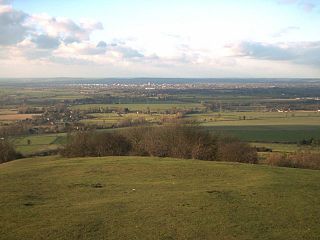
The Aylesbury Vale is a geographical region in Buckinghamshire, England, which is bounded by the City of Milton Keynes and West Northamptonshire to the north, Central Bedfordshire and the Borough of Dacorum (Hertfordshire) to the east, the Chiltern Hills to the south and South Oxfordshire to the west. It is named after Aylesbury, the county town of Buckinghamshire. Winslow and Buckingham are among the larger towns in the vale.

